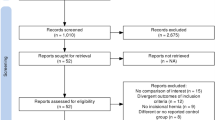Abstract
Background
Single-port laparoscopic surgery (SPLS) is a novel surgical approach consisting of a single umbilical incision through which multiple instruments are inserted, thus avoiding additional incisions necessary in traditional multi-port laparoscopic surgery. SPLS imposes a number of ergonomic restrictions on the surgeon. As a partial solution, several dedicated instruments, including hand-held manipulators with 6 degrees of freedom (DOF), have been introduced to overcome these manipulative restrictions. Robotics has the potential to overcome all of the ergonomic restrictions imposed by the SPLS approach.
Methods
A novel, teleoperated, robotic platform has been developed. SPRINT (Single-Port lapaRoscopy bImaNual roboT) is a multiarm robot enabling bimanual interventions. The robotic arms are introduced into the abdomen through a cylindrical introducer. The surgeon is able to control the robot in a master–slave configuration through a dedicated console, allowing translation of the surgeon’s hand movements to the end-effectors.
Results
Laboratory tests have been performed with the prototype by experienced surgeons for pick and place and suturing exercises. These confirmed the fast-learning curve with the use of the SPRINT robot. In the pick and place exercise, the mean successful peg transfer rate decreased from 97 s at the start to 50 s required for the transfer of the seventh peg. Thereafter, the slope of the curve decreased to 31 s after 17 transfers. The percentage error rate declined from an initial value 50 % to 25 % after 15 pegs had been transferred. In the intracorporeal suture test, needle passage and knot tying were completed by four surgeons in 314 s or less.
Conclusions
A new surgical robot for SPLS has been developed, and its usability and efficacy have been demonstrated. The SPRINT may pave the way for the next generation of surgical robots, the arms of which are assembled inside the insufflated peritoneal cavity, providing full dexterity and manipulative ability with the SPLS approach.







Similar content being viewed by others
References
Palep J (2009) Robotic assisted minimally invasive surgery. J Min Access Surg 5:1–7
Romanelli J, Earle D (2009) Single-port laparoscopic surgery: an overview. Surg Endosc 23:1419–1427
Chow A, Purkayastha S, Aziz O, Paraskeva P (2010) Single-incision laparoscopic access surgery for cholecystectomy: an evolving technique. Surg Endosc 24:709–714
Galvao Neto M, Ramos A, Campos J (2009) Single port laparoscopic access surgery. Tech Gastrointest Endosc 11:84–93
Kroh M, El-Hayek K, Rosenblatt S, Chand B, Escobar P, Kaouk J, Chalikonda S (2011) First human surgery with a novel single port robotic system: cholecystectomy using the da Vinci Single-Site platform. Surg Endosc 25:3566–3573
Morel P, Hagen ME, Bucher P, Buchs NC, Pugin F (2011) Robotic single-port cholecystectomy using a new platform: initial clinical experience. J Gastrointest Surg 15(12):2182–2186
Wren SM, Curet MJ (2011) Single-port robotic cholecystectomy: results from a first human use clinical study of the new da Vinci single-site surgical platform. Arch Surg 146:1122–1127
Ding J, Xu K, Goldman R, Allen P, Fowler D, Simaan N (2010) Design, simulation and evaluation of kinematic alternatives for insertable robotic effectors platforms in single port access surgery. In: Proceedings of the IEEE international conference on robotics and automation (ICRA), May 2010, pp 1053–1058
Shang J, Noonan D, Payne C, Clark J, Sodergren M, Darzi A, Yang GZ (2011) An articulated universal joint based flexible access robot for minimally invasive surgery. In: Proceedings of the IEEE international conference on robotics and automation (ICRA), May 2011, pp 1147–1152
Pearl J, Ponsky J (2008) Natural orifice translumenal surgery: a critical review. J Gastroint Surg 12:1293–1300
Lehman AC, Wood NA, Farritor S, Goede MR, Oleynikov D (2011) Dexterous miniature robot for advanced minimally invasive surgery. Surg Endosc 25:119–123
Phee S, Ho K, Lomanto D, Low S, Huynh V, Kencana A, Yang K, Sun Z, Chung S (2010) Natural orifice transgastric endoscopic wedge hepatic resection in an experimental model using an intuitively controlled master and slave transluminal endoscopic robot (MASTER). Surg Endosc 24:2293–2298
Scarfogliero U, Quaglia C, Piccigallo M, Tognarelli S, Valdastri P, Menciassi A, Dario P (2008) Apparato robotico per interventi di chirurgia minimamente invasiva, Italian patent FI2010A000075
Piccigallo M, Scarfogliero U, Quaglia C, Petroni G, Valdastri P, Menciassi A, Dario P (2010) Design of a novel bimanual robotic system for single port laparoscopy. IEEE/ASME Trans Mechatronics 13 Dec 2010. doi:10.1109/TMECH.2010.2078512
Sanchez A, Petroni G, Piccigallo M, Scarfogliero U, Niccolini M, Liu C, Stefanini C, Zemiti N, Menciassi A, Poignet P, Dario P (2011) Real-time control and evaluation of a teleoperated miniature arm for single port laparoscopy. In: Proceedings of the 33rd international conference of the IEEE engineering in medicine and biology society (EMBC), September 2011, pp 7049–7053
Derossis AM, Fried GM, Abrahamowicz M, Sigman HH, Barkun JS, Meakins JL (1998) Development of a model for training and evaluation of laparoscopic skills. Am J Surg 175:482–487
Acknowledgments
The authors thank Funaro N, Melani A, Favati G, and Filippeschi C for prototype manufacturing and the members of the EndoCas Research Center of the Pisa University for their support during tests sessions. The authors also are grateful to Piccigallo M, Caccavaro S, Troia E, Quaglia C, and Tortora G for their technical advice. Financial support for this study was provided by the European Commission for the Integrated Project: ARAKNES FP7 European Project 224565 (www.araknes.org).
Disclosures
Petroni G, Niccolini M, Menciassi A, Dario P, and Cuschieri A have no conflict of interest or financial ties to disclose.
Author information
Authors and Affiliations
Corresponding author
Electronic supplementary material
Below is the link to the electronic supplementary material.
Supplementary material 1 (MOV 7324 kb)
Supplementary material 2 (MOV 20018 kb)
Rights and permissions
About this article
Cite this article
Petroni, G., Niccolini, M., Menciassi, A. et al. A novel intracorporeal assembling robotic system for single-port laparoscopic surgery. Surg Endosc 27, 665–670 (2013). https://doi.org/10.1007/s00464-012-2453-7
Received:
Accepted:
Published:
Issue Date:
DOI: https://doi.org/10.1007/s00464-012-2453-7




